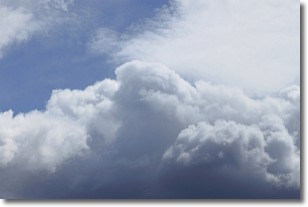Weather Alert in Arizona
Extreme Heat Warning issued August 21 at 2:39AM PDT until August 23 at 11:00PM PDT by NWS Las Vegas NV
AREAS AFFECTED: Northwest Plateau; Lake Havasu and Fort Mohave; Northwest Deserts; Lake Mead National Recreation Area; Owens Valley; Death Valley National Park; Western Mojave Desert; Eastern Mojave Desert, Including the Mojave National Preserve; Morongo Basin; Cadiz Basin; San Bernardino County-Upper Colorado River Valley; Lincoln County; Northeast Clark County; Western Clark and Southern Nye County; Las Vegas Valley; Lake Mead National Recreation Area; Southern Clark County
DESCRIPTION: * WHAT...Dangerously hot conditions with temperatures around 105 in Kingman, Golden Valley, Dolan Springs; around 110 in Las Vegas, Pahrump, Barstow, Yucca Valley, Twentynine Palms; around 115 in Laughlin, Bullhead City, Needles, Lake Havasu City; around 120 at Furnace Creek in Death Valley National Park. Expect minimal overnight relief. Major-to-Extreme Heat Risk. In the Owens Valley, temperatures will be around 100 to 105, yielding Moderate Heat Risk. * WHERE...Portions of northwest Arizona, southeast California, and south central and southern Nevada. * WHEN...Until 11 PM PDT /11 PM MST/ Saturday. * IMPACTS...Heat related illnesses increase significantly during extreme heat events.
INSTRUCTION: Drink plenty of fluids, stay in an air-conditioned room, stay out of the sun, and check up on relatives and neighbors. Do not leave young children and pets in unattended vehicles. Car interiors will reach lethal temperatures in a matter of minutes. Take extra precautions when outside. Wear lightweight and loose fitting clothing. Try to limit strenuous activities to early morning or evening. Take action when you see symptoms of heat exhaustion and heat stroke. To reduce risk during outdoor work, the Occupational Safety and Health Administration recommends scheduling frequent rest breaks in shaded or air conditioned environments. Anyone overcome by heat should be moved to a cool and shaded location. Heat stroke is an emergency! Call 9 1 1. Monitor the latest forecasts and warnings for updates.
Want more detail? Get the Complete 7 Day and Night Detailed Forecast!
Current U.S. National Radar--Current
The Current National Weather Radar is shown below with a UTC Time (subtract 5 hours from UTC to get Eastern Time).

National Weather Forecast--Current
The Current National Weather Forecast and National Weather Map are shown below.

National Weather Forecast for Tomorrow
Tomorrow National Weather Forecast and Tomorrow National Weather Map are show below.

North America Water Vapor (Moisture)
This map shows recent moisture content over North America. Bright and colored areas show high moisture (ie, clouds); brown indicates very little moisture present; black indicates no moisture.

Weather Topic: What are Nimbostratus Clouds?
Home - Education - Cloud Types - Nimbostratus Clouds
 Next Topic: Precipitation
Next Topic: Precipitation
A nimbostratus cloud is similar to a stratus cloud in its formless,
smooth appearance. However, a nimbostratus cloud is darker than a stratus cloud,
because it is thicker.
Unlike a stratus cloud, a nimbostratus cloud typically brings with it the threat
of moderate to heavy precipitation. In some cases, the precipitation may evaporate
before reaching the ground, a phenomenon known as virga.
Next Topic: Precipitation
Weather Topic: What is Rain?
Home - Education - Precipitation - Rain
 Next Topic: Shelf Clouds
Next Topic: Shelf Clouds
Precipitation in the form of water droplets is called rain.
Rain generally has a tendency to fall with less intensity over a greater period
of time, and when rainfall is more severe it is usually less sustained.
Rain is the most common form of precipitation and happens with greater frequency
depending on the season and regional influences. Cities have been shown to have
an observable effect on rainfall, due to an effect called the urban heat island.
Compared to upwind, monthly rainfall between twenty and forty miles downwind of
cities is 30% greater.
Next Topic: Shelf Clouds
Current conditions powered by WeatherAPI.com




